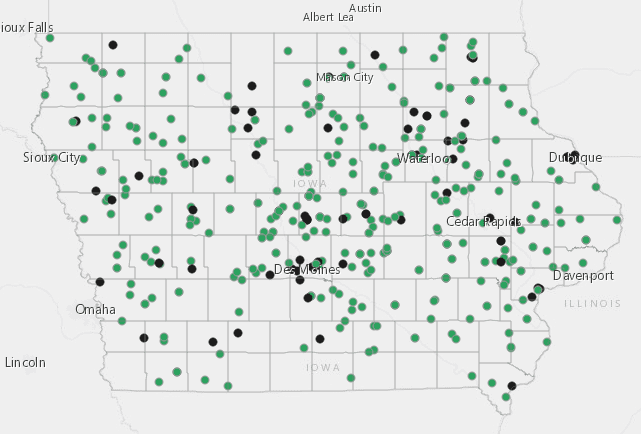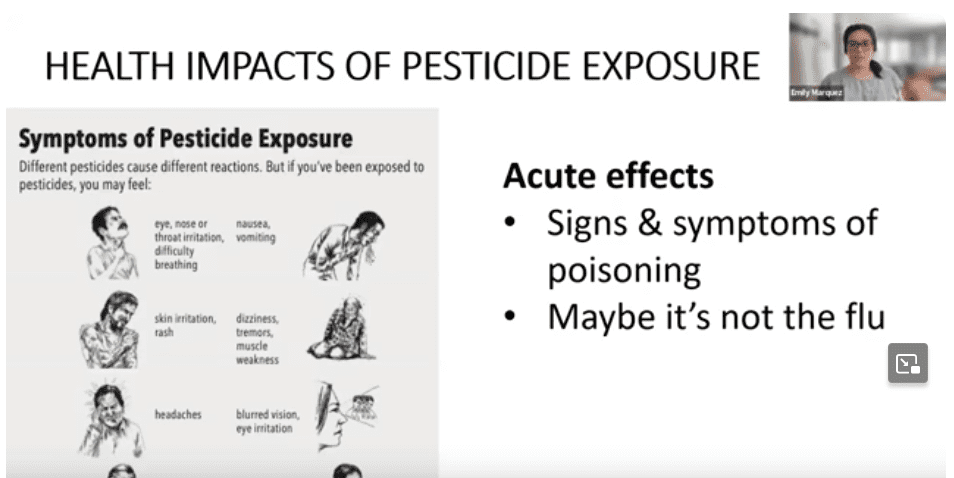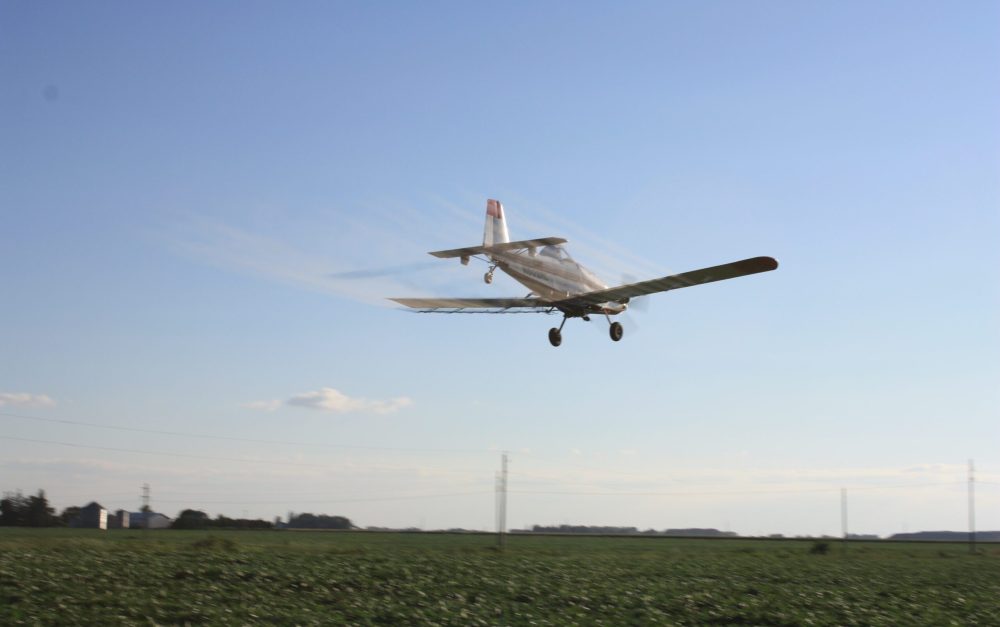You just had a pesticide drift incident — now what? Knowing more about your options can make a difference if you experience pesticide drift or pesticide misapplication.
The virtual event titled “When pesticide drift happens to you,” was hosted by Practical Farmers of Iowa on August 18, 2023 and featured two of PAN’s staff. While the webinar had an Iowa focus, much of the content is applicable throughout the United States.
This three and a half hour webinar can be viewed here in its entirety.
A small-scale farmer’s perspective on pesticide drift
PAN’s Communications Manager, Rob Faux, begins the webinar by outlining his experiences and concerns as a small-scale, diversified farmer with respect to pesticide misapplication. His story sets the stage for the portions of the webinar that follow, providing a concrete example of how a drift event can unfold from its inception to a potential conclusion in litigation.

Rob’s drift story is one of nearly 500 reported drift cases in Iowa from 2010 to 2015. Of these reported cases, one quarter of them involved some sort of verified human exposure to the chemical drift.
Investigation and enforcement in pesticide drift cases
The Iowa Department of Agriculture and Land Stewardship houses the Pesticide Bureau for the state. This office is responsible for the enforcement of federal pesticide laws as outlined by FIFRA (Federal Insecticide, Fungicide and Rodenticide Act). Mark Smith represented Iowa’s Pesticide Bureau and discussed the process of receiving and investigating reports of pesticide drift and misapplication.
Upon completion of an investigation, the Pesticide Bureau (each state will have a similar office, but may be named differently) has the power to issue warnings and fines if they determine the applicator failed to follow the pesticide use labels. A Summary of Public Record for drift on organic or horticultural operations was conducted by PFI for the years 2008 to 2012. The results there show that, while 80% of the reported cases were confirmed, only a quarter of those had a modest fine assessed.
Seeking representation in a pesticide drift case
Environmental lawyer, Karen Varley, outlined and discussed the process of seeking representation if you have been a victim of pesticide drift or misapplication. Varley is licensed to practice law in Iowa and her discussion was framed in that context. She provided general guidelines that could be applicable to a drift incident anywhere in the US.
It is important to note that the state’s enforcement arm (Iowa’s Pesticide Bureau) is not empowered to help a drift victim to seek compensation for losses, it is only able to determine if use labels were followed and can only go as far as to levy a fine. Varley suggests useful guidelines for navigating personal, insurance and legal avenues for compensation that the state enforcement arm cannot provide.
Pesticide drift’s relationship to health and safety concerns
After a question and answer session, PAN’s Senior Scientist, Emily Marquez, provided an overview of the health threats posed by pesticides, especially as a result of an acute poisoning in a drift or misapplication event. Marquez emphasized that pesticide poisoning symptoms may not be easy to recognize and many in the medical profession do not receive significant training on the subject. She recommended the EPA publication, Recognition and Management of Pesticide Poisonings as a valuable resource.
This part of the presentation included valuable insight on protecting your health and the health of others, as well as the health of pets and livestock, who might have been exposed to pesticides. You can view PAN’s In Case of Drift toolkit for additional resources.








